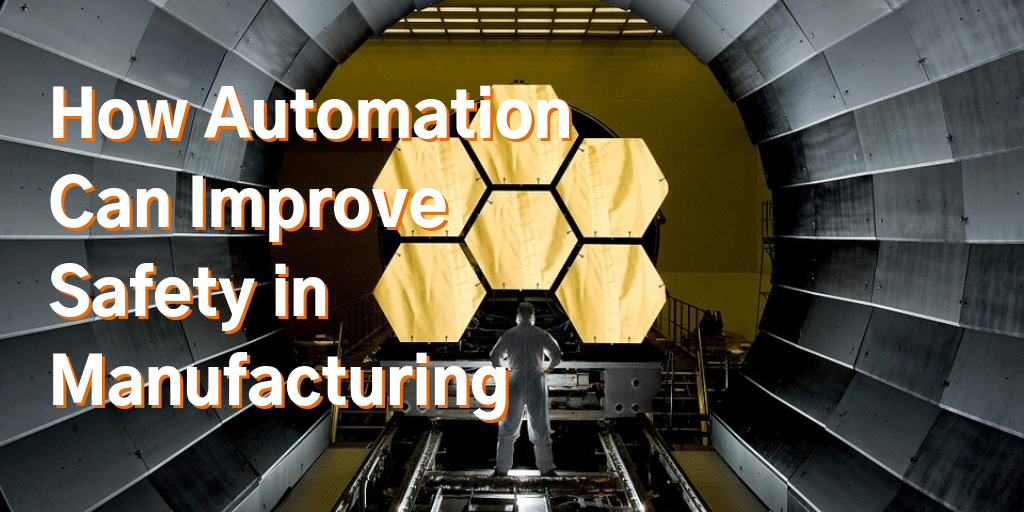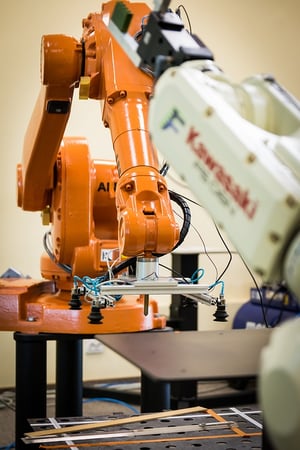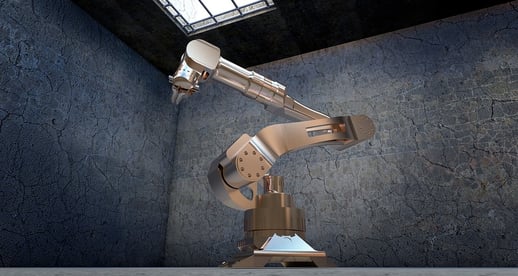
Businesses now have more of an incentive than ever before to invest in robotics and other automated systems. Thanks to continued advances in technology, such systems let buyers achieve higher levels of efficiency and precision than they would if they spent the same sums on purely human capital.
The benefits don’t end there, though. Automation can also generate solutions to persistent safety challenges. In this article, we will describe several types of automated safety solutions and examine their use in real-world manufacturing, machining, and construction environments.
The Benefits of Automation on Manufacturing
Manufacturing has always posed risks to factory workers, as it involves large heavy machines with moving parts capable of damaging the human body, either through repetitive use or by accident.[i] Automation has eliminated some of these risks by allowing for the production of goods without direct, hands-on human involvement. But it has also created problems of its own – especially in the past, when it involved the introduction of systems that could not be inspected or repaired without being manually stopped or taken off line completely.[ii]

Newer safety systems rely more heavily on technology. They depend on equipment that allows automated systems to respond to potential problems immediately and restart just as quickly, without depending on any human input.
For example, the German company Bosch’s mobility solutions plant in Toluca, Mexico, began using photoelectric light curtains around a machine that installs needle bearings in engine shafts in 2014. These light curtains, manufactured by Japan’s Keyence, have greatly significantly improved the safety and productivity of the machine (and of an associated workstation that verifies certain assembly processes). They have achieved better results because they are capable of shutting the machine down right away whenever they are interrupted by an object or a human worker. The previous system, by contrast, needed another two seconds to activate its physical guard components, so it had a more significant impact on productivity and posed more safety risks.[iii]
Going forward, technology will give manufacturers additional tools to enhance safety. It will allow them to incorporate machine learning and other artificial intelligence solutions that use data generated by networks of smart monitoring devices to identify the roots of new problems. In turn, these systems will be able respond to emergencies and unexpected developments, while also generating predictive and preventative maintenance schedules.[iv]
The Benefits of Automation on Machining
Like manufacturing, machining has never been a risk-free operation. It poses hazards to workers, as it depends on the use of heavy, powerful machines with fast-moving parts that cut and shape raw materials into specific forms.
Once again, these types of equipment can cause injuries from accidents and repetitive use – and technology can help contain these risks. For example, Wisconsin-based Dynatect makes automatic door actuators that can be used to retrofit existing single or double horizontal-door systems for automated machining centers. These actuators help door operators to avoid being crushed or incurring repetitive stress injuries.[v]
Meanwhile, Indiana-based PowerSafe Automation has equipped the lathe spindles used by Japan’s Tsubakimoto Chain Co. with switches, proximity sensors, and encoders that help protect bystanders from spinning lathes. The equipment prevents workers from moving too close to machining centers that are in operation.[vi]

Meanwhile, these are not the only challenges posed by machining. There are other challenges to consider, such as the noise and dust or particulate matter that machining equipment produces during the shaping process. Dynatect addresses this issue by manufacturing machine roof covers that can contain debris and reduce noise levels. Its products are particularly useful because they do not affect operational performance; that is, they do not restrict the range of motion of the equipment they cover.[vii]
The Benefits of Automation on Construction
The construction business is also replete with hazards. It uses heavy equipment to move large quantities of material from place to place, it puts workers in the way of those moving loads, it generates dust and debris, and it often requires laborers, supervisors, inspectors, and other personnel to ascend to greater and greater heights as buildings grow taller. Additionally, it is less structured than a factory floor and more vulnerable to unpredictable factors such as weather.[viii]
Technology can mitigate these dangers, though. Construction companies can use field service management (FSM) software and forms such as the Safety and Equipment360 packages offered by Texas-based HCSS to make the task of safety reporting easier and more standardized.[ix] They can also learn from the example of the Minnesota Department of Transportation, which launched a pilot program in 2015 to test new methods for inspecting local bridges. MnDoT used drones to photograph and assess every surface of these bridges – including hard-to-reach features such as trusses, piers, and high abutments before drawing up construction and maintenance plans.[x] Builders and their contractors could do the same, using drones to monitor sections of construction sites that are difficult to access.
Going forward, construction firms will also be able to benefit from cyber-physical systems (CPSs) such as the experimental scaffolding safety system mentioned in a Professional Safety Journal article from February 2019. The article explained that researchers had used data from an accelerometer, a displacement sensor, load cells, and switch sensors to develop a virtual model of a scaffolding system and then integrated that model into an Android mobile app that automatically alerted users whenever it identified a risk of failure.[xi]
Eventually, they will also have access to self-driving vehicles that can deliver materials more quickly, efficiently, and cheaply – and also more safely, since they can be controlled remotely and travel on paths that keep them away from human crews. (They may not even have to buy or rent such vehicles, since kits will be available for operators who want to retrofit existing models.)[xii]
Conclusion
Manufacturers, machining facilities, and construction firms would all have good reasons to invest in automation even if safety were not a concern. With robots and other automated systems, they can realize significant improvements in efficiency, productivity, and reliability. But as mentioned above, the benefits don’t end there. Automation can also contribute to the elimination of long-standing safety concerns, making the workplace less dangerous than it has ever been before.
And in the future, it is likely to do even more. As AI and other new technologies advance further, they should be able to identify, address, and prevent safety risks that we haven’t even recognized yet.
Author Bio
Gregory Miller is a writer with DO Supply who covers Robotics, Artificial Intelligence and Automation. When not writing, he enjoys hiking, rock climbing and opining about the virtues of coffee.
[i] https://www.safetyandhealthmagazine.com/articles/16789-robots-in-the-workplace
[ii] https://www.machinedesign.com/news/safety-automation
[iii] https://www.assemblymag.com/articles/94340-technologies-for-automated-machine-safety
[iv] https://www.manufacturing.net/article/2018/04/how-artificial-intelligence-redefining-manufacturing-industry
[v] https://dynatect.com/industrial-safety-machine-guarding/
[vi] https://www.assemblymag.com/articles/94340-technologies-for-automated-machine-safety
[vii] https://dynatect.com/industrial-safety-machine-guarding/
[viii] https://www.constructionbusinessowner.com/technology/software/february-2016-automation-construction-industry
[ix] https://www.hcss.com/products/construction-safety-software/, https://www.hcss.com/products/fleet-maintenance-software/
[x] https://www.citylab.com/transportation/2018/01/to-care-for-aging-bridges-minnesota-taps-the-power-of-drones/551339/
[xi] http://aeasseincludes.assp.org/professionalsafety/pastissues/064/02/F3_0219.pdf?_ga=2.54766507.1803153227.1562361600-1410656519.1562361600
[xii] https://www.constructionbusinessowner.com/technology/software/february-2016-automation-construction-industry






